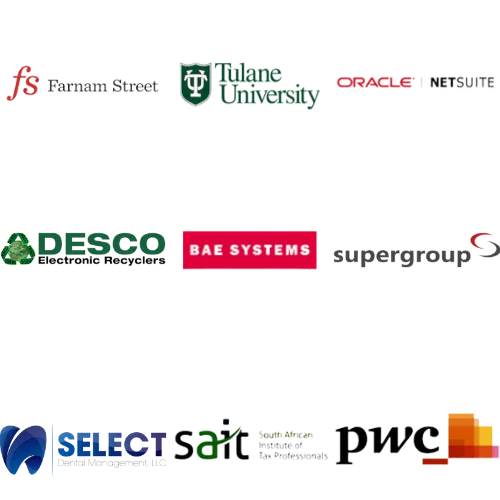Blogs
Insights into the World of New Age Marketing

Why Marketing Is Key To Your Growth Levers
Marketing plays a crucial role in the growth of any business. From increasing demand generation to capturing new market opportunities, effective marketing strategies can unlock a multitude of growth levers. In this blog post, we'll explore why marketing is key to your company's growth and dive into five specific growth levers that can be achieved through marketing: increasing demand generation, increasing sales efficiency and impact, capturing greenfield opportunity, acquiring and integrating additional companies, and adjusting marketing priorities. By understanding the importance of marketing in driving growth, you can create a comprehensive marketing strategy that will help your business reach new heights.
Increasing Demand Generation

Marketing plays a crucial role in maximizing investment returns, with demand generation being a central process for creating awareness and interest in products or services. To achieve the desired growth levers, it's essential to understand the right demand generation strategies.
Tracking demand generation metrics, such as website visits, CTR, opt-in conversions, and CPA, is critical to refining the marketing approach and better understanding the target audience. By doing so, businesses can optimize resource allocation for maximum ROI from marketing efforts, whether that means running campaigns targeting new audiences or improving customer retention rates.
Having an effective demand generation strategy is essential for accelerating growth and avoiding stagnating sales numbers. Armed with this knowledge, businesses can focus on optimizing sales efficiency and maximizing impact.
Increasing Sales Efficiency And Impact

To enhance the impact of sales, it's crucial to increase the efficiency of the sales pipeline, and one effective way to achieve this is by leveraging marketing. With the right marketing tools and strategies in place, marketers can identify potential customers, deliver personalized messages, and gain insights into customer preferences. This, in turn, can result in better conversion rates, improved engagement, and ultimately increased ROI.
Advanced demand generation techniques, such as predictive analytics, A/B testing, personalization, and lead scoring, can be highly effective in maximizing the impact of marketing efforts while reducing the cost per acquisition. By utilizing these strategies, organizations can create targeted campaigns that resonate with their target audience and improve conversion rates.
However, even with a well-optimized sales pipeline, increasing pricing without negatively impacting customer retention or brand loyalty can be challenging. It's essential to strike a delicate balance between maximizing revenue and ensuring that customers continue to perceive value in the product or service. This may involve offering additional features or services to justify the price increase, or implementing pricing strategies such as tiered pricing or value-based pricing. Regardless of the approach, it's crucial to communicate the value of the product or service to customers and ensure that they feel that they are getting their money's worth.
Capturing Greenfield Opportunity

As businesses look to maximize their ROI, they must also consider how they can capture untapped market share from the Total Addressable Market. Particularly in software and technology markets, this means getting customers to switch from analog solutions like using spreadsheets to solve their problems. Greenfield opportunities can come in the form of new markets, new geographies, new customer segments, new languages, and more.
Growth marketing is essential in identifying target audiences in these new markets and creating demand for a product or service where it may not have previously existed. From leveraging data-driven insights to create targeted campaigns that reach new customers to crafting compelling messaging that resonates with those potential buyers, growth marketers are uniquely positioned to help organizations expand into untapped markets.
Speed is key here. There is a market of good fit customers that hasn’t chosen a solution yet, but you need to scale quickly because the unaddressed portion will not remain unaddressed forever. It is a lot more difficult to get a customer to leave a competitor, move all their data, and switch to your solution than it is to find someone who doesn’t have a solution in place already.
By employing these growth marketing strategies in tandem with increasing pricing models, companies can make the most of every investment dollar –– driving up profits without sacrificing customer loyalty or brand reputation. And as businesses start to see increased returns from these efforts, they will be better equipped to take on even more ambitious projects such as acquiring and integrating additional companies. To make sure your solution stands out in a crowded market, you need to move quickly to make this lever a priority for Marketing.
Acquiring And Integrating Additional Companies

Acquiring and integrating additional companies is often a faster and more efficient way of expanding a business, as it allows the acquiring company to tap into the target company's existing customer base, proven product-market fit, and working Go-To-Market strategy. As a result, integrating a new company into an existing portfolio of products can open up new growth opportunities and increase revenue from new and existing customers.
Marketing plays a crucial role in this process by creating a strategy to integrate the companies' marketing efforts. Depending on the overall strategy for the acquisition, Marketing may need to align on the Go-To-Market strategy and integrate the overall marketing organization. They may need to merge Go-To-Market efforts, such as ad spend, content, and creative, to focus on the larger brand narrative and story. Alternatively, if each product is intended to appeal to a different segment of the market, Marketing should identify opportunities for cross-selling between the products and update the brand marketing to include the new addition.
Figuring out which variation of integration Marketing needs to adopt for each acquisition is critical, as it impacts the ability to deliver on the investment thesis. As such, businesses should carefully consider their resources, financial impact, customer sentiment, legal implications, and competition when acquiring and integrating additional companies to ensure a successful and efficient process. By doing so, they can adjust their marketing priorities accordingly and maximize returns.
Final Thoughts: Adjusting Marketing Priorities

To maximize returns on investments, businesses need to adjust their marketing priorities after identifying their acquisition targets and devising a plan for integration. As a growth marketing manager, you can implement five strategies to ensure maximum return on investment:
Build an effective demand generation campaign using content marketing, social media ads, email campaigns, and other promotional methods to bring attention to the acquisitions.
Analyze customer data to identify areas of potential investment and growth.
Monitor competitor activity by constantly assessing the pricing models and product offerings of competitors to stay ahead of the competition.
Develop personalized experiences using customer lifetime value (CLV) metrics to offer customized incentives and rewards tailored to individual needs.
Optimize operations by streamlining processes and refining systems used to increase efficiency and productivity across teams.
By effectively implementing these strategies, businesses can seize new opportunities and maximize returns on investments over the long term while staying ahead of the competition.
Investment is a long-term game, and marketing can be an effective tool in maximizing returns. However, it is important to allocate the budget wisely and focus on the right types of marketing to see positive results. Strategic decision making and dedication are crucial for successful investing, and there is always potential for risk. Therefore, any investments should be done with caution.
Understanding how to maximize returns through marketing is key to achieving financial growth and stability. With careful planning and research, leveraging the power of marketing can increase the chances of getting higher returns from investments. It is important to monitor progress along the way to know where adjustments may be needed.
YouTube Video Podcast
Watch More Podcast Videos the YouTube Video Channel
Remember to Subscribe!
Building Your Automated Demand-Gen Machine
Testimonials
Dudley’s Skilful Pursuit system, guidance and expertise has made a significant difference to our business. It has fundamentally changed how we do what we do.

CEO
Eazybranch
Dudley’s Skilful Pursuit program has been enlightening, extremely impactful to the business, and even transformational in professional and personal growth.

Managing Director
Desco Electronic Recyclers
Dudley really cares about the team as a person and is
always happy to sit down with you to make sure you are hitting your goals.
They really care about everyone on the
team and help everyone to up their game every single day. It’s been truly rewarding working with someone with a great work ethic, depth of knowledge, and experience.
There are a lot of opportunities for growth working with Dudley. His strategies are remarkable and transformational.



Companies We Worked With



Contact Us
Let Our Team Help Out
Call UK +44 7782 367384
Call USA +1 631-490-7801
Call RSA +27 600 801 412
Email: dudley@skilfulpursuit.com
Podcasts & Blogs
Podcast: 100 Days and Beyond
Podcast: Marketing Leadership
Blog: The Fractional CMO
YouTube Channel: Business Growth Answers
Masterclass Video: Revenue Acceleration Masterclass
COPYRIGHT © - All Rights Reserved. Q&A MARKETING LTD trading as Skilful Pursuit
12867763 - Incorporated in United Kingdom
Office: 10 Harlow Gardens, Kingston Upon Thames, KT1 3FF


